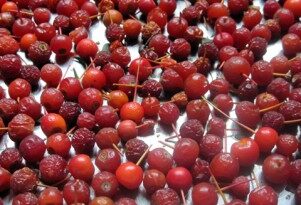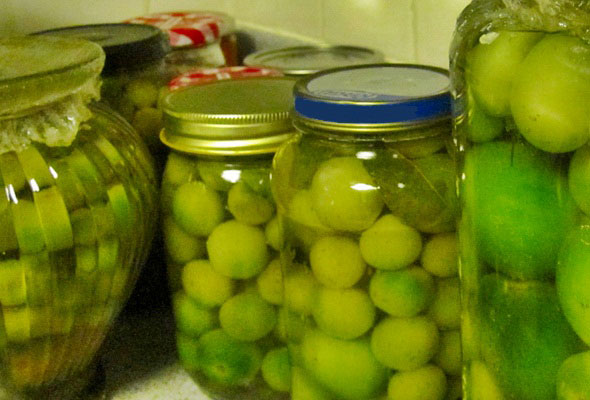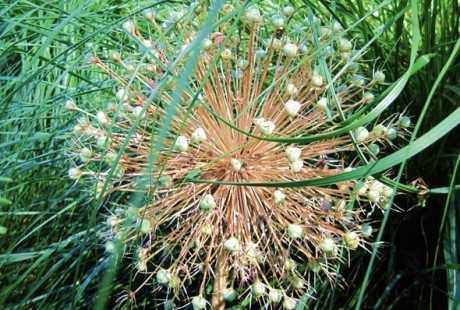purple pods
If I knew how much I would enjoy purple beans, I would only have planted those to begin with. Besides being an attractive feature in the garden, they taste better and are not stringy at all, which is a blessing.
Of course the purple color turns green in the pot, but that’s beside the point.
Why does that happen? There is a complicated explanation, involving the breaking down of anthocyanins at high temperatures, combined with the change in the acidity of the cellular sap due to water dilution and the stripping away of the purple pigment, which leaves behind only the color of the chlorophyll, previously masked by the former, but why spoil the magic? You put raw purple beans in the pot and cooked green beans come out, how cool is that!
The strange thing is that red cabbage also has anthocyanins in it, but when you boil red cabbage, it doesn’t turn green, it turns an even darker shade of purple. This is of course the subject of another lesson in chemistry and cooking that I have yet to learn.
The anthocyanin pigment is very sensitive to pH, it turns from bright red to lime green between acidic and alkaline solutions respectively, and stays purple in neutral media.
Some people noticed that if you fry or roast the beans, they stay purple, so it appears to be the hot water that does the trick, not the heat alone.
The weather cooled and, as always, the pod production machine picked up the pace and regaled me with a fresh batch of produce. I still have to figure out a way to preserve them that doesn’t involve boiling or blanching.




 Previous Post
Previous Post Next Post
Next Post




